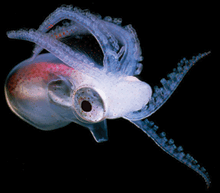 Haemophilus influenzae cells will take up closely related DNA from the environment quite efficiently, when they are made naturally competent by resource limitation.
Haemophilus influenzae cells will take up closely related DNA from the environment quite efficiently, when they are made naturally competent by resource limitation.Previously, I had done some experiments using sonicated chromosomal DNA of two different size distributions. The take-away lesson was that, for a fixed DNA concentration, larger fragments were taken up better than smaller fragments. This could be due to two non-exclusive reasons:
- Larger fragments are more likely to contain an uptake signal sequence.
- The uptake machinery is saturated when I used the smaller fragments, since there are more fragments per unit mass.
But first, and more to a practical concern for our sequencing plans...
I repeated this experiment, but also prepared total DNA and periplasmic DNA (by the slick method of Kahn et al) to make sure that I could cleanly recover chromosomal DNA fragments trapped in the periplasm from bulk chromosomes, as I previously showed for a small USS-containing PCR fragment.
Here are the results of that experiment (in which I provided ~0.5 billion competent cells with 200 ng of end-labeled DNA fragments of two different size distributions, either 1-10kb or 200-400 bp, for 30 minutes):
 In (a), the % uptake is clearly better for the larger size distribution than the smaller size distribution. In (b) and (c), I show that I can purify periplasmic chromosomal fragments away from the cell’s chromosome. In (b), the results using the larger fragments is shown, while in (c) the results using the smaller fragments are shown. (I ran gels with two different agarose concentrations to optimize the separation for the two different input pools).
In (a), the % uptake is clearly better for the larger size distribution than the smaller size distribution. In (b) and (c), I show that I can purify periplasmic chromosomal fragments away from the cell’s chromosome. In (b), the results using the larger fragments is shown, while in (c) the results using the smaller fragments are shown. (I ran gels with two different agarose concentrations to optimize the separation for the two different input pools).One thing to note is that the size-distribution of DNA between the input and periplasmic preparation were effectively indistinguishable. I looked at traces of these lanes in the Molecular Dynamics ImageQuant software, and they looked pretty much exactly the same. This is a little bit confusing, given the two models discussed above and the fact that fewer small fragments were taken up compared with larger fragments. I might have expected that there would be a bias towards the larger fragments in the periplasm compared to the input, but this was not the case.
Another thing to note is that, unlike when I previously did this experiment with USS-containing PCR fragments, there is still evidence of periplasmic DNA in wild type after 30 minutes. I don’t think this is due to poor washing of free DNA away from the cells, but rather reflects that there had been insufficient time to translocate all of the DNA in the periplasm into the cytosol. There is also the possibility that some of the non-chromosomal DNA in the wild-type samples are indeed cytosolic, which I can’t tell without some way to distinguish ssDNA and dsDNA.

Nice results! It's great that you can effectively isolate periplasmic DNA.
ReplyDeleteThanks, Some call me Tim! Now I just have to do something useful with this new skill...
ReplyDelete